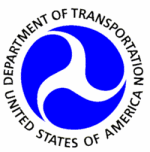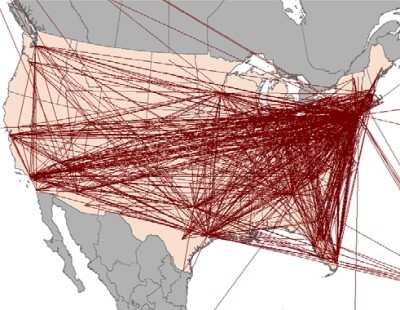Tue, Nov 09, 2010
DOT Inspector General Says A Third Of New York Flights Delayed
Or Cancelled
 The Department of Transportation Office of the Inspector
General has found that as many as one third of flights to and from
the New York region's three primary airports were cancelled or
delayed in 2009, which is still an improvement over the 40 percent
delay or cancellation rate it found in 2007.
The Department of Transportation Office of the Inspector
General has found that as many as one third of flights to and from
the New York region's three primary airports were cancelled or
delayed in 2009, which is still an improvement over the 40 percent
delay or cancellation rate it found in 2007.
In a report to the FAA, the OIG found that there were three
primary reasons for the cancellations and delays: crowded airspace
due to the close proximity and high volume of flight operations of
the three main New York airports; airport capacity constraints; and
continued growth in air traffic during the last 10 years, in part
due to the phase-out of flight limits (caps) from 2000 to 2007.
In a report summary on the DOT website, the OIG said the
re-establishment of those caps at Kennedy in 2008, along with the
implementation of caps for the first time at Newark that same year,
had little effect on overall congestion. " While there is
substantial agreement that New York delays have a nationwide
"ripple effect," the extent and nature of their impact are largely
unknown. FAA's efforts to measure this effect are in the
developmental stage and require additional work to provide a full
understanding of delay propagation," the report said.
The DOT OIG says it made four recommendations to FAA aimed at
reexamining its flight caps, enhancing existing flight data, and
developing a viable methodology for understanding delay propagation
effects. Specifically, the OIG recommended that the FAA:
- Reexamine flight caps at Kennedy, LaGuardia, and Newark
airports, basing the caps on more realistic airport operating
conditions, air carrier scheduling practices, and a goal towards
reducing delays to an acceptable rate. In considering an acceptable
rate and length of delay, FAA should incorporate the views of air
carriers, the airport operator, and passenger groups as well as
lessons learned from other slot-controlled airports.
- Establish a working group of air carriers, academia, and other
aviation research organizations to enhance the understanding of
delay propagation (e.g., develop viable analytic methodologies,
useful database structures, and common terms of reference).
- Enhance existing flight delay data by obtaining aircraft tail
numbers for domestic and international flight operations of U.S.
air carriers in order to better study and manage the propagation
effect of flight delays.
- Complete development of a viable methodology for measuring the
dynamics of flight delays at New York (as well as other U.S.
airports) and their propagation nationwide. This methodology should
include the ability to measure both the amount of delay time being
propagated and the number of subsequent flights being
impacted.

Analysis Of New York Flights Prepared By BTS,
DOT
The Inspector General says that the FAA fully concurred with one
recommendation and partially concurred with three. They have
requested that FAA provide a new written response addressing
specific issues with these three recommendations within 30
days.
More News
From 2023 (YouTube Edition): "Ain’t Your Daddy’s Super Cub”—Don Wade Co-owned by Don and Ron Wade—the former of Don’s Dream Machines, a storied >[...]
Pilot-Rated Passenger Reported That The Pilot Did Not Adequately “Round Out” The Landing Flare And The Airplane Bounced And Yawed To The Right Analysis: The pilot state>[...]
Dead Reckoning Dead reckoning, as applied to flying, is the navigation of an airplane solely by means of computations based on airspeed, course, heading, wind direction, and speed,>[...]
Aero Linx: Lake Amphibian Club This website is created and sponsored by the Lake Amphibian Club, to help spread the word about these wonderful, versatile amphibians that can land j>[...]
“I am deeply honored to be sworn in as NASA administrator. NASA’s mission is as imperative and urgent as ever — to push the boundaries of human exploration, ignit>[...]
 Classic Aero-TV: In Praise of Alabamas Patriot Aircraft USA
Classic Aero-TV: In Praise of Alabamas Patriot Aircraft USA NTSB Final Report: Cirrus Design Corp SR22
NTSB Final Report: Cirrus Design Corp SR22 ANN's Daily Aero-Term (12.21.25): Dead Reckoning
ANN's Daily Aero-Term (12.21.25): Dead Reckoning ANN's Daily Aero-Linx (12.21.25)
ANN's Daily Aero-Linx (12.21.25) Aero-News: Quote of the Day (12.21.25)
Aero-News: Quote of the Day (12.21.25)




